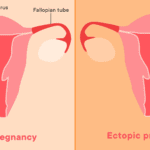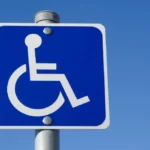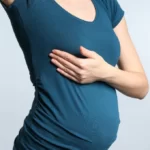
During the nine months of pregnancy, the baby develops and grows inside the protective environment of the womb. One might wonder, “How does a baby breathe in the womb?” In this article, we will delve into the intricate details of fetal respiration and shed light on the remarkable adaptations that enable a baby to obtain oxygen before birth. Let’s embark on this captivating journey of life!
Related: 30 Pregnancy Myths: Separating Fact from Fiction
How Does A Baby Breathe In The Womb? Explained:
Within the womb, a baby’s respiratory system undergoes a series of complex developments. Although the baby doesn’t inhale air as we do, it relies on a different mechanism to obtain oxygen. Let’s explore the process step by step of how does a baby breathe in the womb.
Formation of the Respiratory System
The respiratory system of a baby begins to form early in pregnancy. Around the fourth week, the respiratory tract starts to develop from a small outgrowth in the throat region. Over time, this structure grows and branches, forming the lungs, airways, and associated organs.
Amniotic Fluid: The Life-Giving Medium
In the womb, the baby’s lungs are filled with a fluid called amniotic fluid, which plays a crucial role in the respiratory process. This fluid surrounds the baby, providing cushioning, protection, and serving as a medium for oxygen exchange.
Oxygen Supply Through the Placenta
The placenta, a remarkable organ, acts as the lifeline for the baby in the womb. It facilitates the exchange of oxygen and nutrients between the mother and the baby. Oxygen-rich blood from the mother passes through the placenta and enters the baby’s bloodstream.
Oxygen Transport via the Umbilical Cord
The oxygen-rich blood from the placenta is carried to the baby through the umbilical cord. This cord, containing blood vessels, connects the baby to the placenta. The oxygenated blood is then distributed throughout the baby’s body, providing nourishment and supporting growth.
Oxygen Diffusion Across the Placental Barrier
Within the placenta, oxygen molecules diffuse from the mother’s blood vessels to the baby’s blood vessels. This diffusion occurs due to the difference in oxygen concentration on either side of the placental barrier, allowing oxygen to reach the baby’s bloodstream.
Fetal Hemoglobin: Efficient Oxygen Transport
The baby’s red blood cells contain a special type of hemoglobin called fetal hemoglobin. Fetal hemoglobin has a higher affinity for oxygen than adult hemoglobin, enabling efficient oxygen uptake from the placenta. This ensures an adequate supply of oxygen to the developing baby.
Excretion of Carbon Dioxide
While the baby receives oxygen through the placenta, it also produces carbon dioxide as a waste product. The carbon dioxide diffuses back into the mother’s bloodstream through the placenta. The mother’s lungs then eliminate the carbon dioxide when she exhales.
Practice Breathing Movements
As the pregnancy progresses, the baby begins to practice breathing movements in the womb. These movements involve rhythmic contractions and expansions of the diaphragm and chest muscles. Although the baby doesn’t inhale air, these movements help strengthen the respiratory muscles and prepare them for breathing outside the womb.
Lung Development
During the later stages of pregnancy, the baby’s lungs undergo significant development. The air sacs, known as alveoli, begin to multiply and become more complex, allowing for efficient oxygen exchange. Surfactant, a substance that reduces surface tension in the lungs, is also produced. This ensures that the air sacs remain open and prevents them from collapsing.
Swallowing and Amniotic Fluid Circulation
The baby regularly swallows amniotic fluid while in the womb. This swallowing reflex helps circulate the fluid throughout the digestive system, kidneys, and lungs. The amniotic fluid enters the lungs, promoting proper lung development and assisting in the maturation of respiratory tissues.
Respiratory Reflexes
In addition to breathing movements, the baby also exhibits respiratory reflexes in the womb. These reflexes, such as hiccupping and gasping, play a role in the development of the respiratory system and help the baby become accustomed to the sensation of breathing.
Changes Before Birth
As the due date approaches, several changes occur in preparation for birth. One significant change is the reduction in the production of fetal hemoglobin, which allows the baby’s body to adapt to the transition from obtaining oxygen through the placenta to breathing air after birth.
First Breath After Birth
When the baby is born, a series of events triggers the first breath. As the baby emerges into the outside world, exposure to the air, temperature changes, and the sensation of touch stimulate the respiratory centers in the brain. This prompts the baby to take the first breath, filling the lungs with air.
Circulatory Changes
Once the baby takes its first breath, the circulatory system undergoes significant adjustments. The closure of certain fetal blood vessels, such as the ductus arteriosus and foramen ovale, redirects the blood flow and separates the circulatory systems of the lungs and the rest of the body.
Transition to Air Breathing
After birth, the baby’s respiratory system transitions from relying on the placenta for oxygen to breathing air. The lungs gradually take over the role of oxygen exchange, and the baby begins to breathe independently. This transition marks a crucial milestone in the baby’s development.
Related: The Role of Doulas in Pregnancy and Childbirth
Do Babies Breathe Amniotic Fluid?
While babies are in the womb, they do not breathe in the same way as they do after birth. Instead of breathing through their lungs, they receive oxygen through the umbilical cord from the placenta. While in the womb, babies are surrounded by amniotic fluid, and while they do swallow and inhale small amounts of this fluid, it does not serve as their primary source of oxygen. The amniotic fluid helps with the development of the lungs and the digestive system. However, after birth, babies take their first breath, and their lungs begin to fill with air, replacing the amniotic fluid. At that point, they start breathing air and their lungs take over the vital role of oxygenating their blood.
Do Babies Breathe through their Nose in the Womb?
No, babies do not breathe through their nose in the womb. While in the womb, their oxygen supply comes from the placenta through the umbilical cord. The amniotic fluid surrounds the baby, and they may inhale small amounts of it, but it is not the primary source of oxygen. The baby’s lungs are filled with fluid, and their respiratory system is not fully functional until after birth. The first breath taken by the baby after birth is when their lungs begin to expand, and they start breathing through their nose and mouth.
How does a Baby Breathe in the Womb without Drowning?
Babies in the womb do not breathe in the same way as they do after birth, and they do not experience drowning in the amniotic fluid. Instead of breathing air into their lungs, their oxygen supply comes from the placenta through the umbilical cord. The baby’s lungs are filled with fluid, which plays a crucial role in their development. The oxygenated blood from the placenta circulates through the umbilical cord and enters the baby’s body, providing the necessary oxygen for growth and development. The amniotic fluid also helps protect and cushion the baby while in the womb, allowing them to float and move comfortably. The transition to breathing air occurs at birth when the baby takes their first breath and their lungs begin to exchange oxygen and carbon dioxide.
What Happens to the Baby’s Lungs during and after Delivery?
During and after delivery, the baby’s lungs undergo significant changes. The first breath replaces the fluid-filled lungs with air, leading to lung expansion and clearance of lung fluid. Surfactant production increases to prevent alveoli collapse, while increased blood flow oxygenates the blood and removes carbon dioxide. Once the lungs are filled with air and fluid is cleared, the baby establishes regular breathing patterns. Additional support may be needed for some babies to aid in the transition to breathing outside the womb.
Do Babies get Oxygen after Birth?
Yes, babies do receive oxygen after birth. During the birthing process, the baby’s lungs transition from a fluid-filled environment to breathing air. Once the baby takes the first breath, the lungs expand, and oxygen from the air enters the lungs. The oxygen is then transferred to the bloodstream, where it is carried to the body’s tissues and organs. This process allows the baby to receive the necessary oxygen for survival and normal bodily functions after birth.
When does a Baby take its first Breath in the Womb?
A baby typically takes its first breath after birth, not in the womb. While in the womb, the baby receives oxygen through the placenta and umbilical cord, rather than through the lungs. The lungs are filled with fluid during pregnancy to aid in their development. The first breath occurs as the baby is born and enters the world outside the womb. This initiates the process of lung adaptation, as the baby’s lungs expand, fluid is cleared, and air begins to enter the lungs for oxygen exchange.
Are Babies Awake during Labor?
Babies are not typically fully awake during labor. In the womb, they exist in a state of sleep or wakefulness, but their level of consciousness is different from that of an awake adult. As labor progresses, contractions and other factors can stimulate the baby, causing them to become more alert or active. However, it’s important to note that the baby’s ability to perceive and experience sensations during labor is still not fully understood. Some research suggests that babies may experience a certain level of awareness during labor, while others propose that their experience is more akin to a dream-like state. Ultimately, the exact level of consciousness and awareness during labor in babies remains a topic of ongoing study.
Why do Babies have Trouble Breathing after Birth?
Babies can experience breathing difficulties after birth due to various reasons. The transition from the womb to breathing air can be challenging, and it takes time for their lungs to adapt. Premature babies may have underdeveloped lungs, leading to respiratory distress syndrome (RDS). Transient tachypnea of the newborn (TTN) can occur when there is excess fluid in the lungs. Meconium aspiration, where babies inhale meconium-stained fluid, can also cause breathing issues. Birth-related factors and difficult deliveries can contribute as well. Most newborns adjust their breathing within a short period, but healthcare providers monitor and provide care if needed.
How do Babies know to Breathe when Born?
Babies instinctively know to breathe when they are born due to a combination of factors. Chemical and sensory stimulation, as well as reflexes, play a role in initiating their first breath. The pressure and changes in oxygen and carbon dioxide levels during the birth process stimulate receptors, triggering the baby to breathe. Sensory stimulation from exposure to air, temperature changes, and touch further prompt them to take a breath. Reflexes, such as the gag reflex and breathing reflex, aid in protecting the airways and initiating breathing. The baby’s developed central nervous system sends signals to respiratory muscles, coordinating the breathing process. While these mechanisms usually work naturally, healthcare providers closely monitor newborns to ensure a smooth transition and provide assistance if necessary.
Why do Babies cry when they are Born?
Babies cry when they are born as a natural response to their new environment and to communicate their needs. Crying is a vital means of expressing discomfort, hunger, fatigue, pain, or the need for attention. It is their primary way of communicating when they are unable to convey their needs through words or gestures. Crying also helps clear their lungs of amniotic fluid and stimulates their respiratory system. Additionally, the process of birth itself can be overwhelming and stressful for the baby, leading to crying as a way to release tension and adapt to their surroundings.
What do Babies do in the Womb all day?
During their time in the womb, babies sleep, move, suck their thumbs, swallow amniotic fluid, hiccup, develop their senses, and exhibit reflexes. They sleep and wake, gradually increasing their movements from subtle twitches to noticeable kicks and rolls. They can hear sounds, sense light, and experience flavors. Hiccups are common, helping in the development of their diaphragm muscles. Reflexes like grasping and startle prepare them for life outside the womb. Each baby’s activities may vary, but these are some of the typical behaviors observed during prenatal development.
Related: 20 Hospital Bag Checklist For Delivery
Conclusion
The process of how does a baby breathe in the womb is a fascinating journey of development and adaptation. While inside the womb, the baby relies on the placenta and umbilical cord to obtain oxygen, while the lungs are filled with amniotic fluid. Through the intricate process of fetal respiration, the baby’s respiratory system gradually matures, preparing it for the first breath after birth. Understanding this incredible process reminds us of the wonders of life and the remarkable capabilities of the human body.
In summary, a baby’s ability to breathe in the womb is a unique and intricate process that ensures their oxygen supply and supports their development. From the formation of the respiratory system to the practice breathing movements and the eventual transition to independent breathing after birth, every step in this journey is awe-inspiring. The wonders of fetal respiration highlight the intricacies of human life and the remarkable adaptations that allow babies to thrive even before they take their first breath in the outside world.
Frequently Asked Questions (FAQs)
Can a Baby drown in the Womb?
No, a baby cannot drown in the womb because the respiratory system is not fully functional until birth. The baby receives oxygen through the placenta and does not breathe in amniotic fluid.
Do Babies cry in the Womb?
While babies cannot cry audibly in the womb, they may make movements and facial expressions that resemble crying. However, these movements serve different purposes, such as practicing breathing and exercising facial muscles.
Can a Baby run out of Oxygen in the Womb?
The baby’s oxygen supply in the womb is replenished continuously through the placenta. As long as the placenta functions properly and there are no complications, the baby will not run out of oxygen.
Why do Babies have Hiccups in the Womb?
Hiccups are common for babies in the womb and occur due to the immature development of the diaphragm and other respiratory muscles. Hiccups are considered a normal part of fetal development and serve as a way for the baby to exercise and strengthen their respiratory system.
Do Babies Breathe in the Womb?
While babies do not breathe air in the womb, they receive oxygen through the umbilical cord and placenta. The lungs are filled with amniotic fluid, and oxygen is exchanged between the mother’s blood and the baby’s blood through the placenta.
When do Babies start Breathing on their Own?
Babies start breathing on their own immediately after birth. The first breath is triggered by various stimuli, such as exposure to air and temperature changes. This initiates the transition from fetal respiration to independent breathing.












